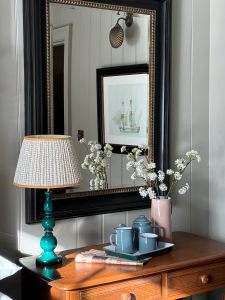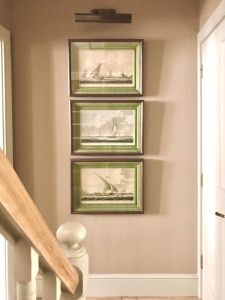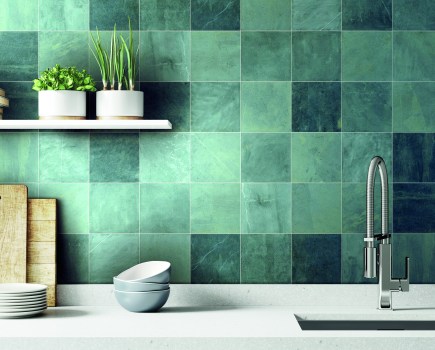Off-white, cream – call it what you like, there’s too many neutrals in the world – but using colour to style your home really can bring your living space to life, says interiors writer Carol Burns. And few things scream coast like blue…
I admit, I am being disingenuous: creams and off-whites are a vital part of any colour palette, whether to offset or set off more vibrant interiors. Traditionally, white is mostly confined to ceilings and paintwork. But the increase in colour options in gloss and wood paints means we have slowly cured ourselves of uninspiring white doors and skirting boards.
Coastal interiors can be a bit stripey and blue. Still, blue is not the only colour of the coast, explains interior designer Jack Thompson (jackthompsonandco.com), who is based in the glorious Isle of Wight – perfectly placed to offer expert advice on getting coastal interiors right.
What about the golden hues of a sandy beach, the greens of beach scrublands and seaweed? All these colours should be incorporated into the perfect coastal palette – if you know how. And luckily enough colour trends for 2024 are sitting in the rich browns and golds so there’s plenty of tones to choose from.
“The waters surrounding the British Isles tend to be a luminous grey/green most of the year,” says Jack. “Olive green, rusty browns and lichen yellow are actually the colours commonly found on our coastlines.

“In a recent renovation of a townhouse on the Isle of Wight, I predominantly used Coachella from Craig and Rose combined with Lucienne Olive to recreate that pallet as an interior works best when linked to the colours found in surrounding nature and scenery.”
But if you really can’t give up entirely on blue in your interiors, Jack advises staying clear of strong and Mediterranean blues, which can clash with the UK’s natural autumn and winter colour palette and darker days. Try using it in accessories, such as tableware, picture frames, throws or painted wooden furniture.
Jack recommends muted heritage tones from the Craig & Rose 1829 collection including Saxe Blue and Morris Blue.
Textures are as important as colours in any interiors – but there are some that offer a sprinkle of coastal style. “Covering walls with painted wide tongue and grove panels can create a holiday feel in the home,” explains Jack. “Sandy colour sofa fabrics and linen sheers as curtains also contribute to creating a relaxed mood.
“Aged brass and rusty metals are ideal to complement the look when used for curtain poles, light switches and sockets. Rugged and textured stone vases and pots can complete the look.”
Of course, you don’t need to live on the shore to incorporate the coastal feel. A nautical look can be implemented anywhere. “Aim for subtle nods to our shorelines rather than lots of popular coastal accessories that can look rather predictable and cliché,” advises Jack.
Spruce up your spare room with these coastal interior tips

“When considering art, look for paintings or aged photos with maritime scenes,” he continues. “Also consider subtle coast-inspired pictures such as a collection of framed hand-pressed algae – rope picture frames are great elements to use to achieve an interesting coastal setting wherever you live.”
Lighting can also give you a nautical look – and you don’t need storm lamps or portholes. “I love using aged brass scallop wall light sconces, and ship well lights as seen on yachts – my go-to is the classic design from British manufacturer Original BTC.”
Coastal accessories should be carefully curated. The idea is to create a subtle unconscious feel of the coast, not a coastal trinket shop. “Coastal-inspired accessories can be visually appealing, such as bluey grey Pigeon homewares by Falcon Enamelware, rattan scallop dishes by Sharland England and seagrass faux foliage,” adds Jack.
At the end of the day. It’s your house. You should choose colours, textures and accessories you like. This is your home, not a coastal Air BnB.







